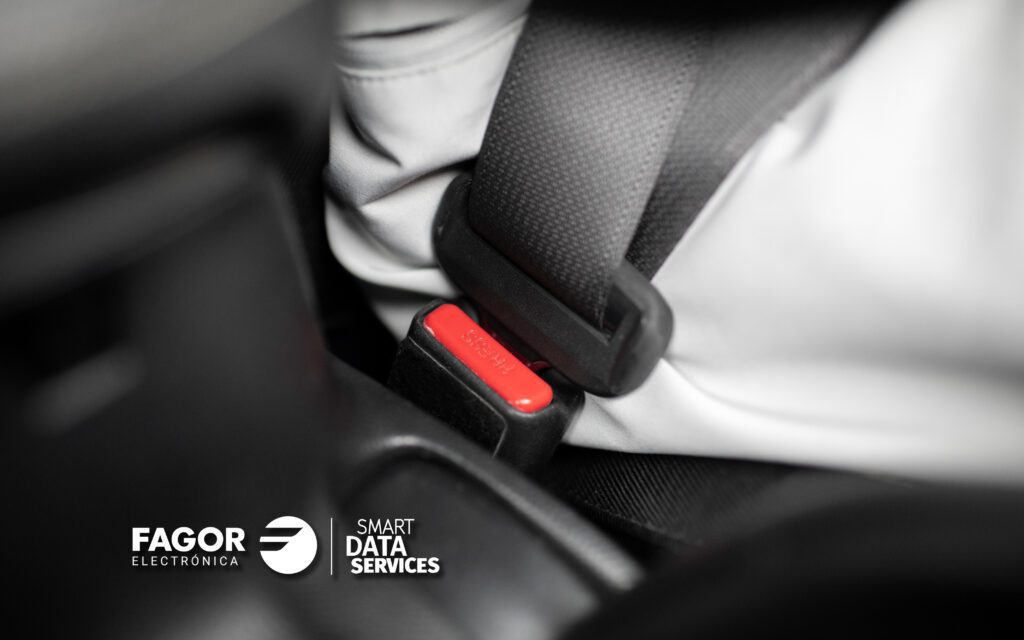Driving safety is something we need to take seriously; the automotive industry, as well as all the actors working in the mobility environment, have been working for years to implement technologies that enable important advances in safety.
Accidents cause hundreds of deaths on the road every year and their consequences are a serious problem for the victim´s environment, as well as for the country itself. Driving safety is something we need to take seriously; the automotive industry, as well as all the actors working in the mobility environment, have been working for years to implement technologies that allow important advances in safety.
Vehicle safety systems
In recent years, a number of advances have been gradually introduced that have made it possible to build increasingly robust and reliable vehicle safety systems.
Driving is nowadays much safer than it was several decades ago; the incorporation of safety systems in cars such as sensors or electronic devices in both driving and driving aids has resulted in a drastic reduction in the number of accidents that occurred in the past.
If we remember what vehicles were like a few years ago, we will remember that they had almost no safety systems of any kind (neither active nor passive). ABS, airbags, child seat restraint systems or even seat belts in all the seats of the vehicle did not exist, with the consequence of having a higher accident rate on the roads.
As we have said, passenger safety is now of paramount importance for the entire automotive sector, as well as for all industries working together. Constantly improving the various types of safety systems is a priority objective, but this would not be so far-reaching if proactive policies were not also implemented by the authorities to make drivers and passengers aware of the need for safer driving.
In the field of driving safety, active and passive safety measures in vehicles are mentioned, but do we really know the difference between active and passive safety?
When we talk about active safety, we are referring to all devices that prevent an accident or incident from occurring, for example, the lane departure warning system is an active safety device.
Passive safety refers to all safety systems and elements that are activated in the event that an accident is unavoidable, and aim to reduce the chances of death and serious injury, for example, seat belts.
Active safety systems
Active safety systems, as mentioned above, are aimed at “avoiding” accidents, which is why such devices can be considered to be increasingly state-of-the-art. The industry is constantly incorporating new active safety functionalities based on emerging technologies.
Today, active safety features and systems are focused on “assisting” driving by avoiding unnecessary distractions, and allowing the driver to have more foresight about what may occur on the road in their interaction with other vehicles.
Some of the most common active safety systems in today´s vehicles include:
- Forward collision warning system: the system warns the driver of the danger of a frontal collision with another car or element.
- Automatic emergency braking: this is an extension of the front warning system, but in this case, when the car detects a stationary element in front of it, if the driver does not act, it acts automatically.
- Lane Departure Warning: The system warns the driver not to stray from the driving lane. Some technologies even perform the lane departure manoeuvre automatically.
- Blind spot: We all know that when looking at a rear-view mirror, there is a blind spot where there is no visibility. This element helps to detect if there is an element in that angle by means of a warning light.
- Cruise control: an active safety feature already installed in everyday driving. It prevents inappropriate speeds on the road as well as being able to manage better fuel consumption.
Passive safety systems
Passive safety systems, as mentioned above, are intended to act when an accident is already unavoidable, and with the aim of reducing the damage to passengers.
These systems have been naturally integrated into the design of vehicles as a “necessary” part of them, and we can say that they are the last defence that the driver and passengers have against the possibility of serious injury or death in an accident.
Among the most common passive safety systems are the following:
- Seat belts: this was the first passive safety feature to be incorporated into a vehicle. Over the years, their usefulness has been transformed, extending to all the seats in a vehicle, and improving the locking and restraint systems.
- Airbag: another common element, which is activated in the event of a collision and ensures that the driver and passengers do not collide with the vehicle structure in the event of a collision.
Safety management in a vehicle fleet
We have addressed the safety of the vehicle as a unit, but when this is taken to a larger scenario such as a fleet of vehicles, it is necessary to manage safety by adding other parameters. Safety management in a fleet requires monitoring of the active and passive safety systems; we need a fleet management platform from which we can ensure that all the systems that each vehicle has are in perfect condition, that they have been checked within the given deadlines, or that they have to be replaced in cases where a malfunctioning system is detected.



